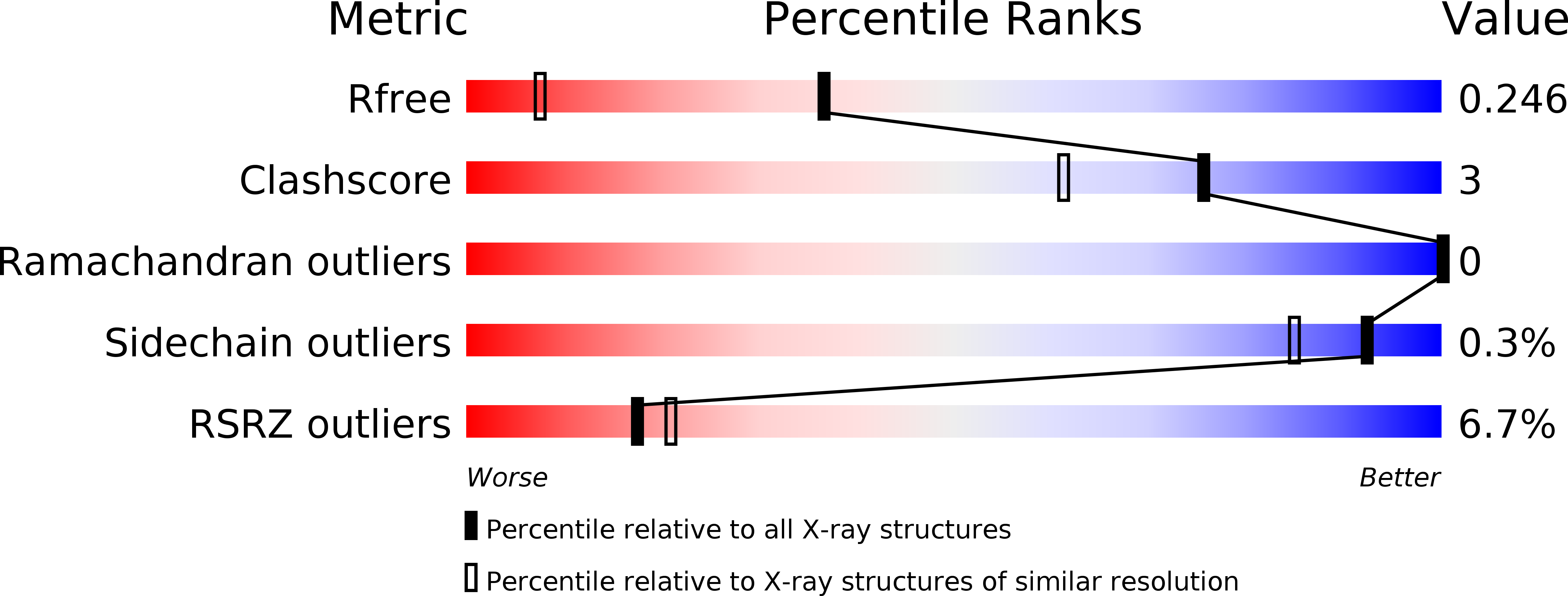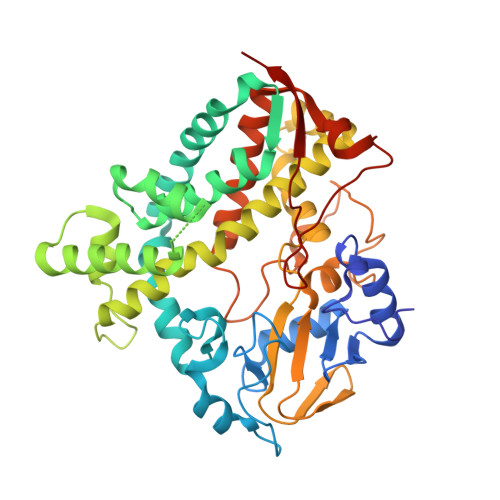The characterisation of two members of the cytochrome P450 CYP150 family: CYP150A5 and CYP150A6 from Mycobacterium marinum.
Child, S.A., Flint, K.L., Bruning, J.B., Bell, S.G.(2019) Biochim Biophys Acta Gen Subj 1863: 925-934
- PubMed: 30826435
- DOI: https://doi.org/10.1016/j.bbagen.2019.02.016
- Primary Citation of Related Structures:
6DCD - PubMed Abstract:
Actinobacteria, including the Mycobacteria, have a large component of cytochrome P450 family monooxygenases. This includes Mycobacterium tuberculosis, M. ulcerans and M. marinum, and M. vanbaalenii. These enzymes can abstract CH bonds and have important roles in natural product biosynthesis. Two members of the bacterial CYP150 family, CYP150A5 and CYP150A6 from M. marinum, were produced, purified and characterised. The potential substrate ranges of both enzymes were analysed and the monooxygenase activity of CYP150A5 was reconstituted using a physiological electron transfer partner system. CYP150A6 was structurally characterised by X-ray crystallography. CYP150A5 was shown to bind various norisoprenoids and terpenoids. It could regioselectively hydroxylate β-ionol. The X-ray crystal structure of substrate-free CYP150A6 was solved to 1.5 Å. This displayed an open conformation with short F and G helices, an unresolved F-G loop region and exposed active site pocket. The active site residues could be identified and important variations were found among the CYP150A enzymes. Haem-binding azole inhibitors were identified for both enzymes. The structure of CYP150A6 will facilitate the identification of physiological substrates and the design of better inhibitors for members of this P450 family. Based on the observed differences in substrate binding preference and sequence variations among the active site residues, their roles are predicted to be different. Multiple CYP150 family members were found in many bacteria and are prevalent in the Mycobacteria including several human pathogens. Inhibition and structural data are reported here for these enzymes for the first time.
Organizational Affiliation:
Department of Chemistry, University of Adelaide, SA 5005, Australia.















